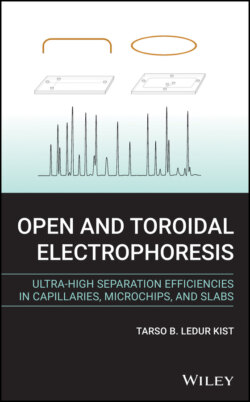Читать книгу Open and Toroidal Electrophoresis - Tarso B. Ledur Kist - Страница 14
1.1.2 Electric Permittivity of Water
ОглавлениеWater is a remarkable solvent for the dissolution, dissociation, and ionization of many substances. There are a few ways to predict these unique properties of water. The predictive models belong either to the classical theory of electromagnetism, statistical mechanics, thermodynamics, or the molecular dynamics simulations that use dedicated software to predict the physical movements of atoms and molecules (which are based on the fundamental Newton equations of mechanics). Above all, it must be remembered that oxygen has the second highest electronegativity of the whole periodic table [2] (see Figure 1.1). Only fluorine has a higher electronegativity; it forms only one covalent bond with a hydrogen atom (hydrogen fluoride) and is not liquid at room temperature (above 19.5 C). Nitrogen, the other neighbor of oxygen in the periodic table, forms three covalent bonds with hydrogen and undergoes sp3 hybridization, producing three sp3 bonding orbitals and one sp3 non-bonding orbital (forming ammonia). It is also a gas at room temperature. In water molecules, on the other hand, oxygen establishes covalent bonds with two hydrogen atoms. The resulting sp3 structure contains two bonding orbitals (with a partial positive charge at each hydrogen position) and two non-bonding orbitals (with a partial negative charge on each). This produces a large electric dipole moment, especially considering that this is a small molecule, which explains the high relative electric permittivity of water (a small molecule with a large electric dipole moment), as shown in Table 1.1. The large amount of hydrogen bonds per unit volume within bulk water plays an important role in many of its unique properties. For example, the relatively high values of surface tension, boiling point, thermal conductivity, and latent heat of evaporation, to name a few. The strength and directional feature of hydrogen bonds explains a few additional odd properties, e.g., the solid (ice) has a lower density than the liquid (water).
The relative electric (static) permittivity of water is represented by the constant and has an important role in the Coulomb equation, equation 1.1. This constant is high for water and Table 1.1 shows a list for comparison. Moreover, the average number of hydrogen bonds between water molecules in pure water is much larger than the average number of hydrogen bonds within hydrofluoridic acid or ammonia, due to the symmetry of the two sp3 bonding orbitals and the two sp3 non-bonding orbitals of water molecules. This maximizes the average number of intermolecular hydrogen bonds – up to two as negative charge donor and two as negative charge acceptor – totaling up to four hydrogen bonds per molecule. Therefore, pure water is liquid from 273.15 K up to 373.15 K at 1 atm. The electric force () among ions within a liquid is given by:
(1.1)
where represents the electric permittivity of the vacuum, represents the permittivity of the liquid (solvent), is defined as the relative permittivity, and are the charges, and the distance from each other. Table 1.1 shows the relative (static) permittivity of some solvents; note that water is among the highest.
Figure 1.1 Some neighbors of oxygen in the periodic table. The atomic number is at the upper left, the electronic configuration at the upper right, and the electronegativity [2] at the bottom left. Oxygen has the highest electronegativity of all, except for fluorine. The hydrides shown are: methane, ammonia, water, hydrogen fluoride, silicon hydride, phosphine, hydrogen sulfide, and hydrogen chloride. All are gases in the 0 to 100 C range and one atmosphere of pressure, except for water and hydrogen fluoride, which has a boiling point of 19.5 C.
